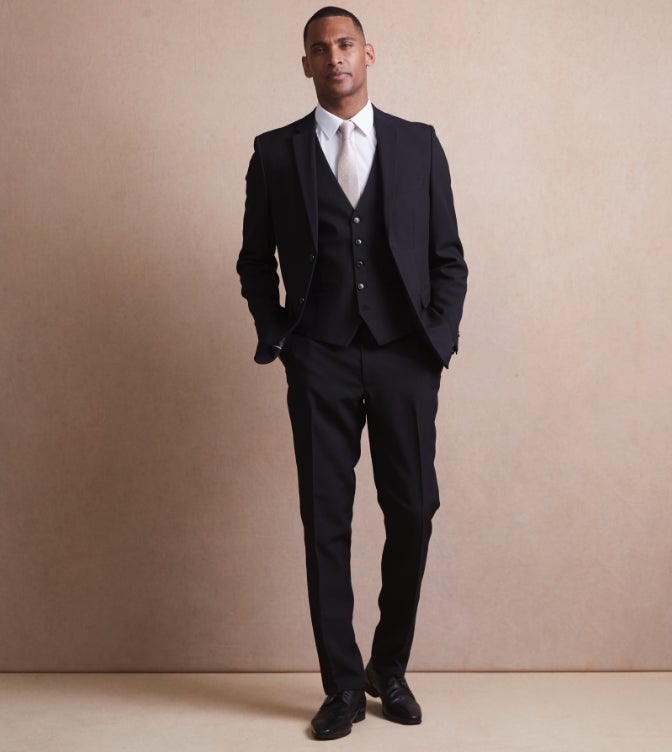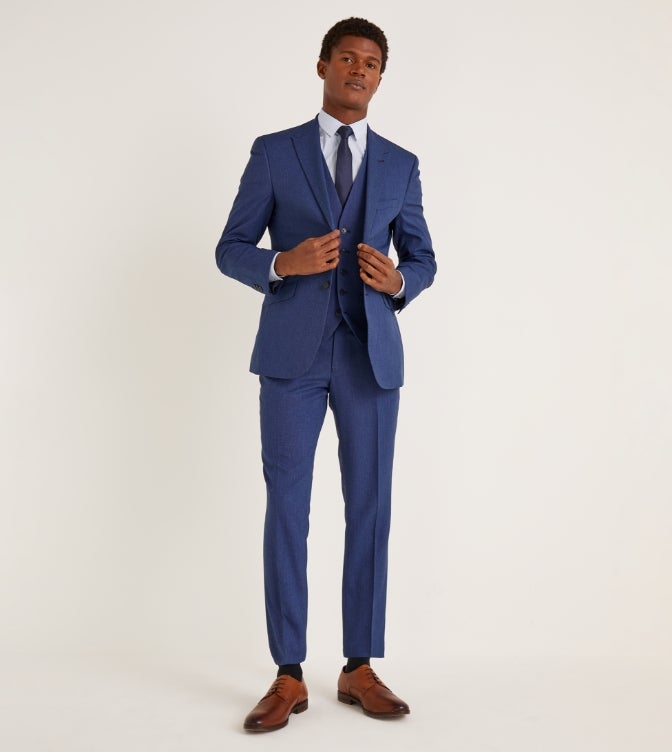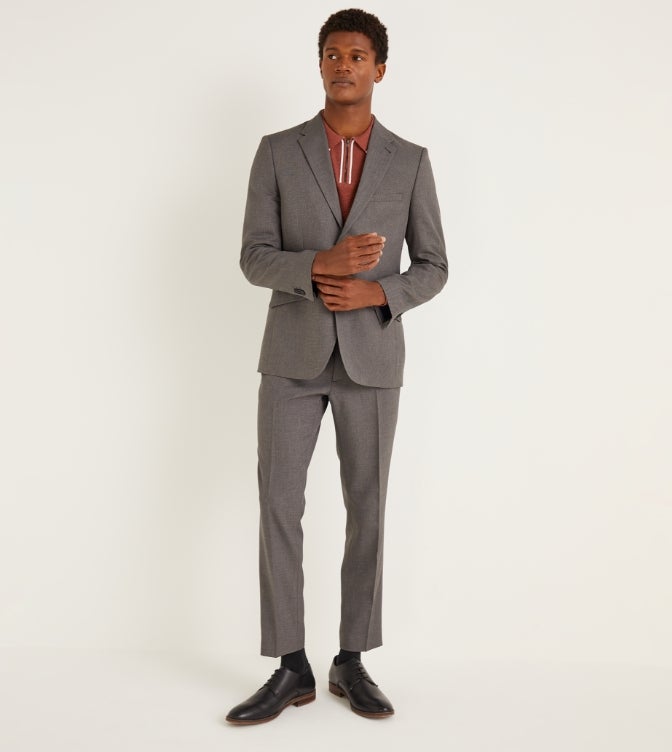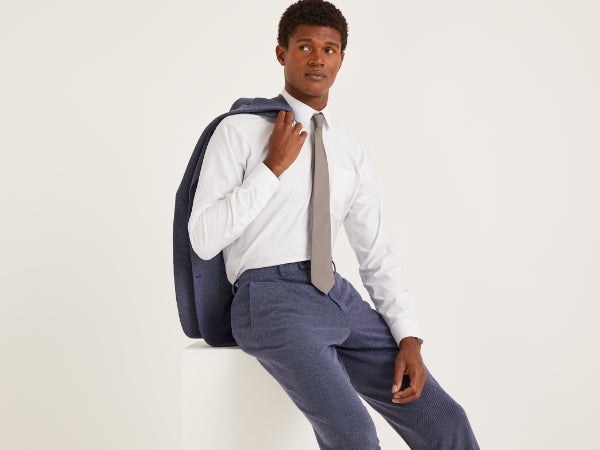
How To Match Your Suit, Shirt & Tie
Every man looks his best in a good suit, however getting formalwear that both fits and looks great can be easier said than done. Once a base suit has been chosen, then comes the sometimes tricky task of identifying a shirt and tie that complements a suit perfectly. Thankfully, this task doesn’t have to be approached with dread. In the following guide, we’ll describe which shirt and tie types work with particular blazers and cuts, how to mix and match colours with ease, and where and when to use pattern in your suiting.
Style
Proportion is key to ensuring a blazer, shirt and tie are working in harmony.
In simple terms, the tie and the widest part of the jacket’s lapels should be the same width, while the spread of the shirt collar should be the same width, too. This works in almost every event, except when the jacket’s lapel is especially large. In this case, choose a shirt and tie that work together as described above, making sure they are slightly thinner than the width of the lapel, while avoiding going too thin as this will completely throw the proportions out. Beyond body shape and proportions, the formality of the occasion is the other element that could influence the suit, shirt and tie you choose.
For more casual events, a button-down collar is a great choice, especially for those that can pull off a slimmer suit, paired with a slim tie. At the other end of the spectrum, black tie events unsurprisingly call for a tux jacket with a classic collar shirt and a bow tie. For anything in between, from a business meeting to a wedding or a funeral, a classic spread collar is the safest option, with a tie and jacket that match proportionately.
In simple terms, the tie and the widest part of the jacket’s lapels should be the same width, while the spread of the shirt collar should be the same width, too. This works in almost every event, except when the jacket’s lapel is especially large. In this case, choose a shirt and tie that work together as described above, making sure they are slightly thinner than the width of the lapel, while avoiding going too thin as this will completely throw the proportions out. Beyond body shape and proportions, the formality of the occasion is the other element that could influence the suit, shirt and tie you choose.
For more casual events, a button-down collar is a great choice, especially for those that can pull off a slimmer suit, paired with a slim tie. At the other end of the spectrum, black tie events unsurprisingly call for a tux jacket with a classic collar shirt and a bow tie. For anything in between, from a business meeting to a wedding or a funeral, a classic spread collar is the safest option, with a tie and jacket that match proportionately.
Colours
Colour can be a bit trickier to master when it comes to suits, as many people seem to just know which shades work best together. However, they aren’t in the know with some sort of secret code, they have simply taken the time to learn and remember which colours are the right match for each other. This means that, with a little bit of help, anyone can put together a sharp, balanced suit.
The key to getting it right is by getting to grips with the colour wheel, a tool developed by Albert Einstein that shows the relationship between different shades. The best way to use it in a suit-buying context is to choose a base colour for the suit that compliments the wearer, before finding shades that are adjacent to, complement or contrast it. Be sure to remember however that a tie should always, without exception, be darker than a shirt.
If you’re still struggling to get a formal outfit to work properly together, read on to find out the shirts and ties that work well with the most common suit colours.
The key to getting it right is by getting to grips with the colour wheel, a tool developed by Albert Einstein that shows the relationship between different shades. The best way to use it in a suit-buying context is to choose a base colour for the suit that compliments the wearer, before finding shades that are adjacent to, complement or contrast it. Be sure to remember however that a tie should always, without exception, be darker than a shirt.
If you’re still struggling to get a formal outfit to work properly together, read on to find out the shirts and ties that work well with the most common suit colours.
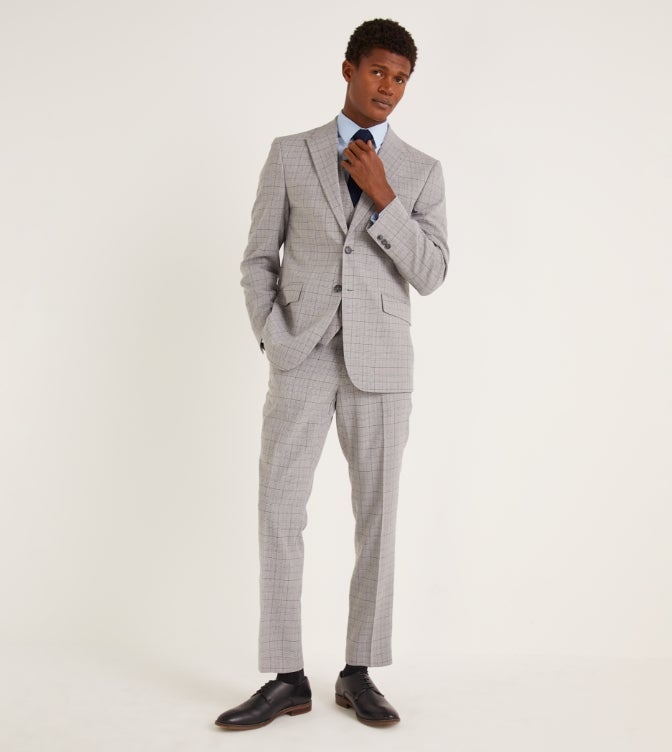
Patterns
To make it work, it is again a story of proportion. Unlike with the size of the lapels, collar and tie, patterns need to be of different proportions to work properly together. And while we recommend experimenting with different patterns to see how they work together, the tips below can be used as starting points to help find the perfect look for you:
Same pattern style but different proportions
Example: Thin pinstripe suit, plain shirt, thick stripe tie
Different patterns
Example: Plain suit, narrow pinstripe shirt, polka dot tie
Patterned shirt only
Example: Plain suit, checked shirt, plain tie
Patterned tie only
Example: Plain suit, plain shirt, patterned two-colour tie (one colour matching shade of shirt)
Checks and polka dots
Example: Wide-check suit, gingham shirt, round motif tie
Same pattern style but different proportions
Example: Thin pinstripe suit, plain shirt, thick stripe tie
Different patterns
Example: Plain suit, narrow pinstripe shirt, polka dot tie
Patterned shirt only
Example: Plain suit, checked shirt, plain tie
Patterned tie only
Example: Plain suit, plain shirt, patterned two-colour tie (one colour matching shade of shirt)
Checks and polka dots
Example: Wide-check suit, gingham shirt, round motif tie
